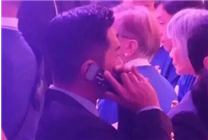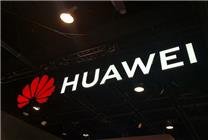Louis Koo: The Actor Who Prefers Feature Phones Over Smartphones
Summary:
- Louis Koo shares his reluctance towards smartphones, revealing he only adopted one due to television network demands.
- Despite using a smartphone for news and information, he cherishes his slider feature phone.
- Koo is renowned for his philanthropic efforts, contributing to the construction of over 135 schools in underprivileged areas.
On November 18, during a recent program, popular actor Louis Koo was confronted with an intriguing question from the host: “The news said you don’t use a smartphone, is it true?”
In response, Koo candidly explained, "I actually didn’t want to use a smartphone, but the TV station said that it would no longer support old devices in the future, so I started using a smartphone about seven or eight years ago." This revelation emphasizes his nostalgia for old technology and a preference for simpler devices, contrasting sharply with the prevalent tech trends of today.
Adjusting to Modern Technology
Though Koo has adopted a smartphone, he is still fond of using sliding feature phones. He elaborated, "I typically use my smartphone to read news and information about science, diet, travel, cooking, and even occasional divination." His unique approach to technology highlights a blend of traditional and modern practices, as he continues to hold onto devices he feels more comfortable with.
Notably, Koo was spotted using a slider phone as recently as 2017. He used a Sony Ericsson W995, a model that made its debut in 2009, demonstrating his commitment to his preferred tech style. Surprisingly, even with his smartphone’s capabilities, he chooses to make calls and manage emails through his vintage devices, having even acquired multiple backup slider phones of the same model.
A Philanthropic Icon
Born on October 21, 1970, Louis Koo is not only an actor and singer but also an emblem of philanthropy. He entered the entertainment industry in 1993 when he signed a contract with TVB and quickly rose to fame, notably for his portrayal of Yang Guo in the martial arts drama "The Legend of the Condor Heroes" in 1995.
His altruistic endeavors earned him the nicknames "school-building maniac" and "Principal Gu." Through his personal charity foundation, Koo has donated to establish over 135 schools in economically disadvantaged regions of mainland China. His charitable efforts remained low-profile for many years, with the public only becoming aware of his contributions after director Er Dongsheng revealed his donation list in 2014. This revelation shocked fans who had largely viewed him as a tough on-screen persona.
The tragic Wenchuan earthquake in 2008 marked a significant turning point in Koo’s philanthropic journey. Witnessing the destruction of educational institutions prompted him to take action. He established the "Louis Koo Charitable Foundation" with the goal of rebuilding schools and restoring the learning environments shattered by the disaster. The following year, he inaugurated his first project, the Gu Tianle Hope Primary School in Lingjing Town, Guangxi, thereby formally commencing his "School Building Mania."
The Impact of Louis Koo’s Legacy
Koo’s commitment to philanthropy extends beyond mere financial contributions; it reflects a deep-seated dedication to improving the lives of children in rural areas. His efforts have not only provided educational resources in regions most affected by poverty but have also inspired systematic approaches to charitable work in the entertainment industry.
In an age where technology rapidly evolves, Louis Koo’s story serves as a reminder that genuine connections, both personal and social, can transcend modern conveniences. His case encourages a balanced view of technology: embracing usefulness without losing sight of one’s roots and values.
Conclusion
In summary, Louis Koo defies the norm as he navigates the modern technological landscape while retaining a strong connection to his past. His refreshing honest statements about smartphone usage reveal a deeper philosophy of life that prioritizes simplicity and meaningful contributions. His philanthropic legacy continues to inspire many, showcasing how one can leverage fame and resources for greater societal good.
By optimizing Koo’s narrative, it highlights both his unique preferences and significant charitable contributions, engaging readers with a blend of contemporary relevance and historical context.








